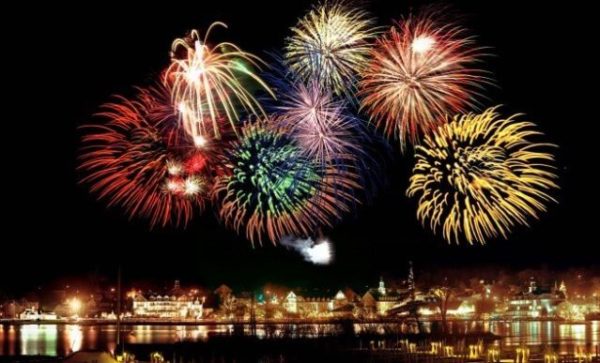Lifestyle
7 countries and cultures where New Year is not celebrated on January 1

While January 1 marks the beginning of the New Year in many parts of the world, several countries follow different calendars and cultural traditions, resulting in alternative New Year celebrations.
These diverse festivities offer a fascinating glimpse into the rich tapestry of global cultures, showcasing unique rituals, customs, and the significance of time.
These are the countries and cultures that do not celebrate the New Year on January 1.
1. The Chinese New Year is celebrated in Jan-Feb
In China, the New Year is based on the lunar calendar, and the celebration typically falls between January 21 and February 20. Also known as the Spring Festival, Chinese New Year is a grand affair marked by family reunions, festive parades, and the iconic dragon and lion dances. Each year is associated with one of the twelve zodiac animals, and elaborate decorations, lanterns, and firecrackers are used to ward off evil spirits and welcome prosperity. The highlight of the celebrations is the reunion dinner on New Year’s Eve, emphasizing the importance of family unity.
2. The Islamic New Year or the Hijri New Year is observed on the first day of Muharram
For countries following the Islamic calendar, the New Year, also known as Hijri New Year or Islamic New Year, is based on lunar months. The date varies each year, and the celebration marks the migration of Prophet Muhammad from Mecca to Medina. While it is a solemn occasion, with some communities engaging in prayer and reflection, other regions may observe it with cultural events and communal gatherings. The Islamic New Year serves as a time for contemplation and gratitude, with believers reflecting on the Hijra and its significance in Islamic history.
3. The Jewish New Year is observed in September-October
Rosh Hashanah, the Jewish New Year, is observed on the first and second days of the Jewish month of Tishrei, which usually falls in September or October. It marks the beginning of the High Holy Days, culminating in Yom Kippur, the Day of Atonement. Rosh Hashanah is a time for introspection, prayer, and the sounding of the shofar, a traditional ram’s horn. Families come together for festive meals featuring symbolic foods like apples dipped in honey to symbolize a sweet year ahead. The ten days between Rosh Hashanah and Yom Kippur are considered a period of reflection and repentance.
4. The Thai New Year or Songkran falls in April
Songkran is the traditional New Year celebration in Thailand, observed in April. It is known for its exuberant water festival, symbolizing purification and the washing away of the previous year’s misfortunes. Locals and tourists participate in water fights, transforming streets into lively, water-soaked battlegrounds. In addition to water festivities, Songkran involves paying respects to elders, making merit at temples, and engaging in cultural and religious activities. The celebration reflects Thailand’s cultural values of respect, renewal, and community.
5. Nowruz or Persian New Year is celebrated in spring
Nowruz, meaning “New Day” in Persian, marks the Persian New Year and the arrival of spring. Celebrated by communities in Iran and several other countries, Nowruz usually occurs on or around March 20. People clean and decorate their homes, visit friends and family, and engage in activities that symbolize renewal and rebirth. Nowruz emphasizes the interconnectedness of nature, culture, and the cyclical nature of time.
6. Aluth Avurudda or the Sinhalese New Year
Aluth Avurudda, also known as Sinhala and Tamil New Year, is the traditional New Year celebration in Sri Lanka. It typically falls in April and marks the end of the harvest season. The festival holds great cultural significance, symbolizing the transition to a new astrological year. Aluth Avurudda is characterized by various customs, including the preparation of traditional foods, the lighting of the hearth, and religious ceremonies. Families engage in cleaning and decorating their homes, while the exchange of sweets and gifts is common. Festive games, music, and dance are integral parts of the celebrations, fostering a sense of community and cultural pride.
7. Ugadi, Baisakhi, Puthandu, Poila Boishakh, Pana Sankranti, Bihu










